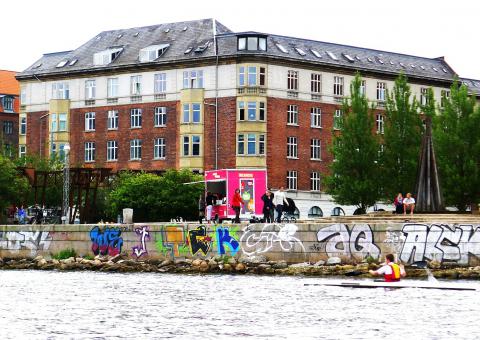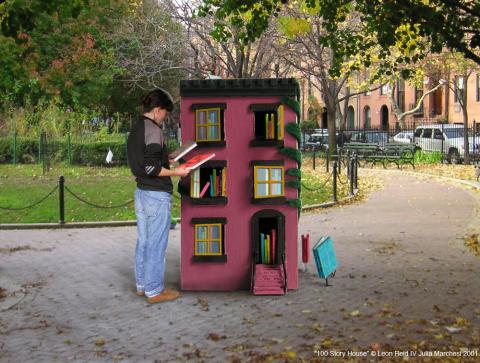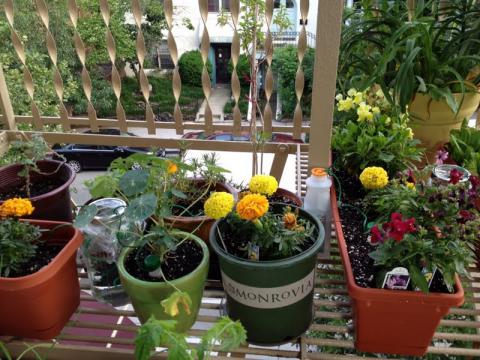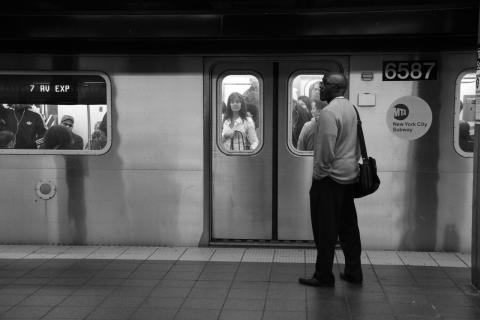So often we travel to opposite ends of the country, even the world, to see, experience and explore new cities. We walk the streets, visit the museums and eat the food, noticing the subtle nuances that make a foreign city so unique and different from the place we call home. While moving to new cities and communities can provide a similar feeling of excitement and curiosity, too often we become immune to the wonders of our own communities and the role we, as citizens, play in creating and seeking out these moments of wonder. Indeed, Jane Jacobs described cities as being similar to travel: “By its nature, the metropolis provides what otherwise could be given only by traveling; namely, the strange.”
Inspired by stories on Polis, a “collaborative blog about cities around the globe,” I’ve assembled a list of DIY projects and experiences that can be recreated in your own backyard that will provide the same feeling of curiosity. Some of them are simple; others require that you get creative and collaborate with your neighbors; most importantly, all of them ask you to go outside of your normal daily quotidian to make an impact on your city and to let your city impact you. After all, there’s nothing like falling in love with your own backyard all over again. Plus, it’s cheaper than flying across the globe.
1. Take a tour

Tours are offered almost everywhere. There are museum tours, monument tours, city tours, brewery tours, park tours, walking tours – the list goes on. But when was the last time you put on your tourist hat and took a tour of your own city? In this blog post, “Architecture Tours and Inclusivity”, the author reflects on taking boat, walking and biking tours to learn about the different layers of Copenhagen architecture. Sounds interesting, right? It is. And I guarantee that you’ll find equally as fascinating boat, walking, biking tours in your own city. So pick a date, invite some friends and become a student of your city.
2. Share your books

I recently met someone who’s committed to only reading books he finds or borrows. When he completes a book, he must return it the universe to be found again. In Brooklyn, two public artists created “A Place for Homeless Books” where people can share, borrow and exchange books at their leisure. Although these artists built a house, the book exchange vehicle could be as simple as a bookshelf in a local coffee shop or your corner grocery store. Not only will people benefit from free literature, but hopefully your community “will be drawn closer together through this vehicle of exchange.”
3. Follow your trash

If your city recycles, then you’ve become accustomed to sorting your trash between recyclables and waste. Some cities even require that you separate your recycling into paper, glass and plastic and, perhaps, compost. Today, sustainability is more than a practice –it’s a lifestyle. Yet visiting your local recycling center and experiencing the recycling process – physically disposing of your recyclables – can be transformative, or an experience of “Transformative Sustainability.” And in visiting your local recycling, you’re bound to connect with other local green citizens.
4. Create nature in the city

Vertical gardens, urban farms, community gardens, and guerilla greening are just a few of the ways that nature has reclaimed it’s right to the city. These green spaces are slowly usurping cement landscapes and reconnecting the urban population with nature, its produce and its beauty. If you’re interested in buying locally sourced fresh foods and love to garden (or love the idea of gardening) but don’t have a backyard, then get creative with gardening in your own living space. Find a ledge, build a planter box, or finally put that fire escape to good use. Take a trip to your local plant nursery and ask the experts which plants grow best in your climate. Then enjoy your new, greener view and your homegrown tomatoes.
5. Occupy your neighborhood

The Occupy Movement may have fizzled out but there’s no reason we should abandon its principles. There continues to be an abundance of under utilized or abandoned spaces in almost every city and neighborhood. Rather than letting that parcel remain an eyesore, get some folks together and take action! These Spanish architects created “Recipes for Urban Occupation” that outline different ideas for occupying unused space for more useful purposes, such as swing sets and see saws. While your community might not need an extra see saw per se, it could need a mobile community garden or a new picnic table. A project that starts with something small could turn into a full-blown community park (like what happened in San Francisco’s Potrero Hill)
6. Capture the quiet moments

Amidst the chaos of daily life, taking a moment to stand still, to feel the rhythm and watch the city unfold in front of your eyes is perhaps the most transformative experience one can have in an urban space. Even amidst the clatter of the Manhattan subway, this author took a step back to actually see what was around her and to capture the intimacy of daily life that is so often calloused over. When you venture out into your neighborhood this week, take off your headphones, put your phone on silent and enjoy the world around you. Take a picture of anything that captures your eye and then share that picture with someone else that might need to take a moment to see the world.









